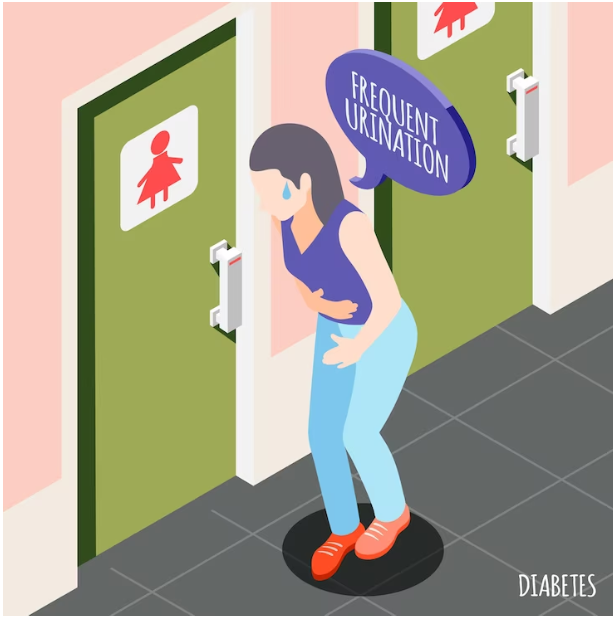7 Best Ways To Cure The Incontinence Problem
Did you know that between 25% and 30% of men and women in the US experience urine incontinence, according to the American Urological Association? Thirty-three million Americans, on average, suffer from overactive bladder problems characterized by urgency, frequency, and absence of urge incontinence.

The difficulties associated with incontinence can be debilitating and overwhelming.
Your social connections, vacation plans, and ability to engage in activities you once enjoyed can be restricted by the constant anxiety of leakage. How about the embarrassment, shame, and self-consciousness that frequently strike?
Fortunately, you may regain control of your bladder by using the following practical techniques, leading a more relaxed and secure life.
1. Use Specialized Incontinence Underwear
Incontinence underpants are specialist underwear created with characteristics that specifically cater to your incontinence challenges. These incontinence underwears have a high absorbent power thanks to their many layers of porous material, such as superabsorbent polymers and polymer-based cores. Incontinence underwear also has enhanced odor-prevention capabilities.
In addition, the large variety of styles and absorbency levels offered by incontinence underwear is another benefit. Manufacturers provide a wide range of options, including incontinence underwear for women, since they are aware that every person’s needs and preferences can differ.
You can select the style that best matches your comfort and convenience, from briefs to pull-on underwear.
2. Embrace Exercises for the Pelvis
Kegels are an efficient pelvic floor exercise for building the muscles that support the bladder and regulate urine flow. These exercises help with bladder control, minimize leakage, and may even be able to treat some types of incontinence. In particular, Kegels make the urethral control muscles stronger.
Remember, you have less flow control when these muscles are weak. So, simply clench the pelvic muscles briefly, then relax to do a Kegel, regardless of sex. Kegels work for both males and females. Several times a day, perform this exercise, progressively increasing its length and rigor, and you’ll gradually overcome incontinence.
3. Dietary Changes are Essential
Some meals and drinks might irritate the bladder, causing increased frequency, urgency, and leaking of urine. You may notice a considerable improvement in bladder control and general quality of life by recognizing and making appropriate dietary changes.
Regarding bladder discomfort, spicy foods, acidic foods, drinks, caffeine, and alcohol are frequently to blame. These elements have a diuretic effect that raises urine output and might exacerbate incontinence symptoms. The caffeine content in liquids, including coffee, tea, energy drinks, and cola, is frequently high.
Hence, you might experience a decrease in urinary urgency and frequency if you cut back on or completely exclude these elements from your diet.
4. Manage Your Weight
Weight management is crucial to control and lessen the intensity of incontinence symptoms. Weight gain can strain your pelvic muscles and bladder more, increasing urine leaks and reducing bladder control. After all, extra weight can raise intra-abdominal pressure, which puts more strain on your bladder.
The muscles that support the bladder and regulate urine flow may become weaker due to this pressure, which could lead to urinary leakage and incontinence.
But maintaining a healthy weight will allow you to alleviate this pressure and better support your joints.
Regular exercise can also directly improve urine control, which is crucial to weight management. Specifically, adding cardiovascular workouts to your routine, like brisk walking, swimming, or cycling, can help you lose weight, increase general fitness, and lessen incontinence symptoms.
5. Train Your Bladder
An effective behavioral strategy for enhancing bladder control and lowering the frequency of incontinence episodes is bladder training. Your bladder can stretch and expand by gradually extending the time between urinations, increasing the bladder’s holding capacity.
And to start bladder training, keep a bathroom visit diary. Record the duration of each visit and the volume of urine passed. This diary will provide you with a foundational understanding of your present urination patterns and aid in discovering any trends or factors contributing to incontinence episodes.
Try increasing your bathroom visits, for instance, from once an hour to once every hour and fifteen minutes. For a few days, follow this new routine to give your bladder time to adjust. The idea is to go at your rate so your bladder can change without feeling uncomfortable or rushed.
6. Body-Mind Techniques
Including mind-body practices in your regimen can enhance the effectiveness of other incontinence management treatments. Stress reduction, relaxation, and general pelvic floor muscle function can improve yoga, deep breathing exercises, and meditation.
Furthermore, handling stress successfully can improve bladder control because stress can worsen incontinence symptoms. So, cultivate a harmonious relationship between your mind and body to increase your chances of managing incontinence.
7. Hydration Control
Hydration is essential for overall health and helps with incontinence management. Even though it might seem contradictory, drinking enough water might help lessen incontinence symptoms. Your urine concentrates more when you don’t drink enough water.
This concentrated pee may irritate the bladder, increasing the need to urinate and perhaps causing incontinence episodes. In contrast, maintaining a sufficient hydration level encourages proper bladder function and contributes to maintaining a healthy fluid balance.
Conclusion
The quest to conquer incontinence opens up a world of opportunities for you. From the comfort and confidence provided by specialized incontinence underwear to the transforming impacts of dietary modifications, weight management, and bladder training, you can liberate yourself from incontinence restrictions. Remember, you can overcome incontinence.